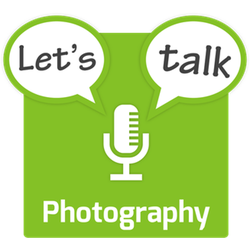Panel:
- Bart Busschots (host) – @bbusschots – Flickr
It’s a solo show this month with Bart chatting directly with the audience. This is the first in what will be a sporadic but on-going series of episodes, each focusing on a single photographic term. The shows will start with a technical description of what the chosen term means, and then move on to look at how it effects the art and craft of photography. This show is all about Dynamic Range.
While this podcast is free for you to enjoy, it’s not free for Bart to create. Please consider supporting the show by becoming a patron on Patreon.
Reminder – you can submit questions for future Q & A shows at http://lets-talk.ie/photoq
Show Outline
- Difference between darkest thing that can be discerned/recorded, AKA black point, and brightest thing that can be discerned, AKA white point
- Our eyes have a dynamic range, our camera sensors have a dynamic range, and digital image formats have a dynamic range:
- Some Numbers (bits ~= f-stops):
- Human Eye: 20 bits
- Digital Camera Sensors: 10–12bits
- JPEG: 8bits
- Typical computer screens: 8 bits
- 35mm film: ~7bits
- Slide film: ~5bits (this is why shooting on slide film is so challenging)
- The dynamic range of our eyes is bigger than the dynamic range of JPEG images (8bits), hence long winter shadows look much deeper in photos than in real life
- The dynamic range of our camera sensors tend to be bigger than the dynamic range of JPEGs (11 or 12bits -v- 8bits), hence a RAW image containing extra ‘hidden’ data that the sliders in our image editing tools can use to lighten shadows and darken highlights etc.
- Some Numbers (bits ~= f-stops):
- The lower dynamic range of our images compared to our eyes is something we have to be aware of when we shoot
- We can avoid the problem by only shooting in situations where the lighting is such that there are no deep shadows or bright highlights
- We can compensate for it by adding in light or filtering some out
- We can embrace it by choosing to blow out the highlights (like in a high key portrait), or to drown out the shadows by silhouetting the subject
- We can work around the problem by capturing enough information to register everything (HDR), and then using maths to intelligently compress that information into the dynamic range of a JPEG (tone mapping)
- High Dynamic Range (HDR) images
- High is a subjective term – a reasonable definition is image data with more than 8bits of intensity levels
- RAW images are HDR images (10–12bits -v- 8bits)
- When you need more dynamic range than your sensor can capture in a single exposure you need to combine data from multiple images into a single file – this kind of exposure stacking is what most people think of as HDR photography
- Tone mapping
- Since JPEGs and computer screens can only show 8bits of depth, HDR images cannot be displayed!
- To turn an HDR image into a photo we can view we need to intelligently compress all the data we have into 8bits. We do this with complicated mathematical algorithms that take multiple inputs, and we call this process tone mapping. Every slider in a tone mapping app corresponds to an input to that apps tone mapping equation.
- When tone mapping, the value assigned to a pixel in the final image is not only determined by the value of that pixel in the the original, the value of the pixels near it also affect the calculation – that’s what makes tone mapping so powerful.
- Effectively, tone mapping darkens areas of an image that are too bright to fit into 8bits, and brightens areas that are too dark.
- The skill with tone mapping is avoiding problems at the boundaries between the areas getting darkened and the areas getting brightened – the most common problems being halos, and large areas like the sky that should have an even brightness getting noticeable darker or brighter towards their centre.
- So-called HDR apps do two things – they let you composite multiple images into a single HDR image, and they let you tone map HDR images. You don’t have to do both! You can use an HDR image to tone map single RAW images to really get the most out of the 10 to 12 bits of data they contain!
- RELATED – LTA 30 was a panel show about HDR with myself, Antonio & Konrad – www.lets-talk.ie/…

